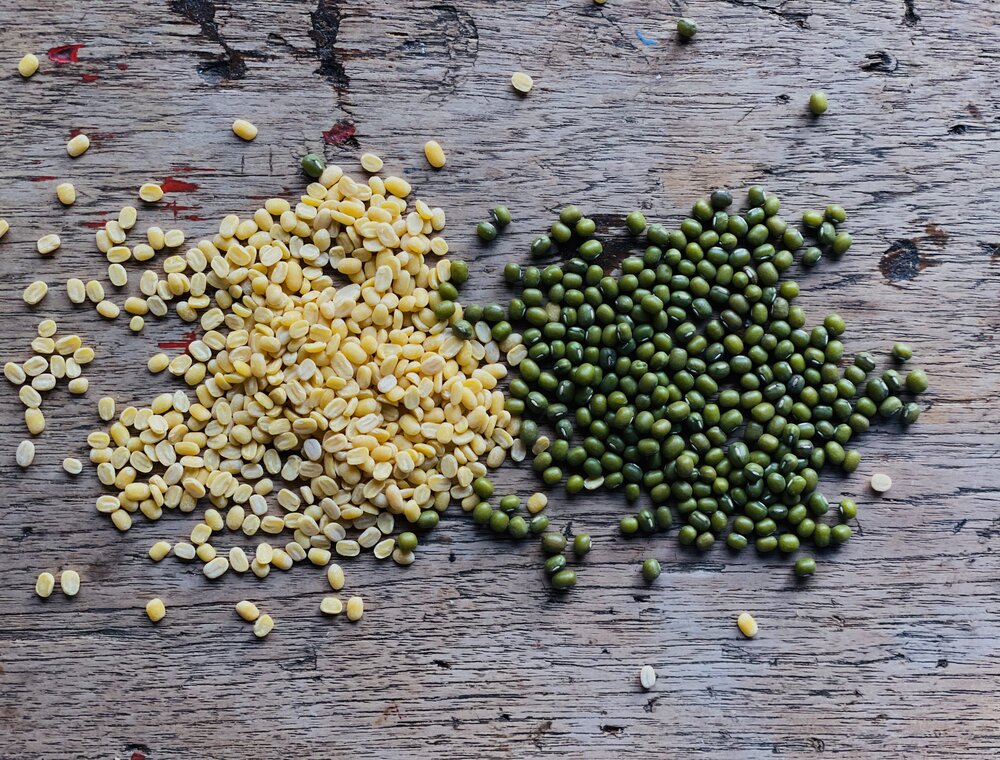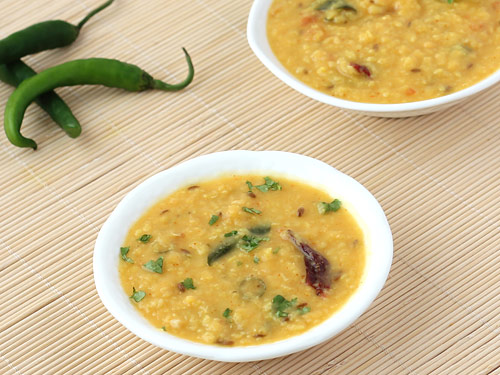Green Moong Dal V/s Yellow Moong Dal
Pulses are the best source of fiber, calcium, potassium, and folate, as we all know. Protein, iron, vitamin B, magnesium, and zinc are all abundant in dals. The body need all of the nutrients in dals and pulses on a regular basis for healthy functioning and optimum health. So, in this post, we’ll go over the relevance of l, as well as their health advantages. Continue reading if this piques your curiosity.
Green Moong Dal
It is a classic Indian ingredient that is frequently used in curries. Pachai payaru in Tamil, cherupayar in Malayalam, pesara parupu in Telugu, hesaru kaalu in Kannada, and moong dal in Hindi are some of the local folk names for beans are mature, dried, and skinned mung beans. It is low in fat and high in fiber by nature. Green moong dal is a traditional Indian ingredient found in many dishes. Mung beans that have been matured, dried, and peeled are known as moong dal beans. It is naturally low in fat and high in fiber. It is best prepared with bold flavorings due to its mild, earthy taste. Green dal is considered a superfood since it is one of the world’s richest sources of plant-based protein. It is one of the most extensively used dals, with medicinal and culinary use.

// HEALTH BENEFITS OF GREEN MOONG DAL-
1. Keeps your Heart Healthy- It aids in the reduction of elevated blood cholesterol levels. It decreases bad cholesterol and increases the flexibility of veins and arteries when consumed regularly. It also helps to keep blood pressure in check.
2. Prevents Major Diseases and Infections- Vitamin B-1, Vitamin C, and Vitamin B-6 are all found in This Regular use of vitamin B6-rich foods aids in the development of resistance to disease-causing substances. It also has anti-cancer qualities, which is a great plus point.
3. Best Vitamin Source- It’s high in vitamins A, B, C, and E, as well as a variety of minerals including iron, calcium, and potassium. Not to mention that it’s a good source of vegetarian protein.
4. Maintains Blood Sugar Levels- It has a significant amount of complex carbohydrates in the form of fiber, which improves digestion. Complex carbohydrates also help to maintain a healthy level of energy in the body by stabilizing blood sugar and preventing it from rising too quickly after a meal. For patients with excessive blood sugar levels, Green Moong can be quite useful.
5. Reduces Risk of Inflammation- contains phenolic acids, flavonoids, caffeic acid, and cinnamic acid, which are all powerful antioxidants. These antioxidants help to counteract the negative effects of free radicals and protect cells from oxidative damage. High levels of free radicals interact with cell components, wreaking havoc on health and raising the risk of chronic inflammation.
Also read- Top 25 Indian Recipes with a Healthy Twist!
Yellow Moong Dal
It is widely used in a wide range of cuisines, from dal and khichdi to kheer and halwa. This dal doesn’t need to soak for hours and can be cooked right away. Cooked dal has less than 1 gramme of fat per cup. This is , on the other hand, may be used to make a variety of meals. It has no negative side effects, however it might create issues if used in quantities considerably greater than recommended. Protein and other nutrients included in these are useful to the body in a variety of ways. It stops each cell in the body from receiving appropriate nutrients. It includes folate, manganese, magnesium, vitamin B1, phosphorus, iron, copper, potassium, zinc, B2, B3, B5, B6, and selenium.

// HEALTH BENEFITS OF YELLOW MOONG DAL-
1. Reduces Heart Risk- Moong beans have been shown in several studies to contain qualities that can help lower LDL cholesterol, which is linked to an increased risk of heart disease. Thus, it protects your cardiovascular health.
2. Promotes Weight Loss- It aids in the proper action of the cholecystokinin gene. As a consequence, you will feel fuller after eating and your metabolism will speed up. As a result, it aids in weight management by avoiding overeating.
3. Helps in Brain Development and DNA- It is a very nutrient-dense meal. Potassium, magnesium, iron, and copper are among some of the minerals found in it. It also has folate, fiber, and vitamin B6 in it. This , which is high in B-complex vitamins, aids in the breakdown of carbohydrates into glucose and the production of useful energy for the body. It contains folic acid, which aids in the maintenance of good brain function and the formation of DNA.
4. Enhances Digestion- The aids in the production of butyrate, a short-chained fatty acid that aids in the maintenance of gastrointestinal wall health. It contains anti-inflammatory effects that keep gas from building up. This is easy to digest and a great way to keep your body in good shape.
5. Improves Blood Flow in the Body- Iron is abundant in moong dal, which aids in the synthesis of red blood cells. A sufficient number of red blood cells is required to avoid anemia and optimize overall blood circulation.

We hope that this post has helped you understand the significance of Green Moong Dal and Yellow Moong Dal. We’ve also included a link to recipes for both Green and Yellow Dal. Please let us know your thoughts on it.




Trackbacks/Pingbacks